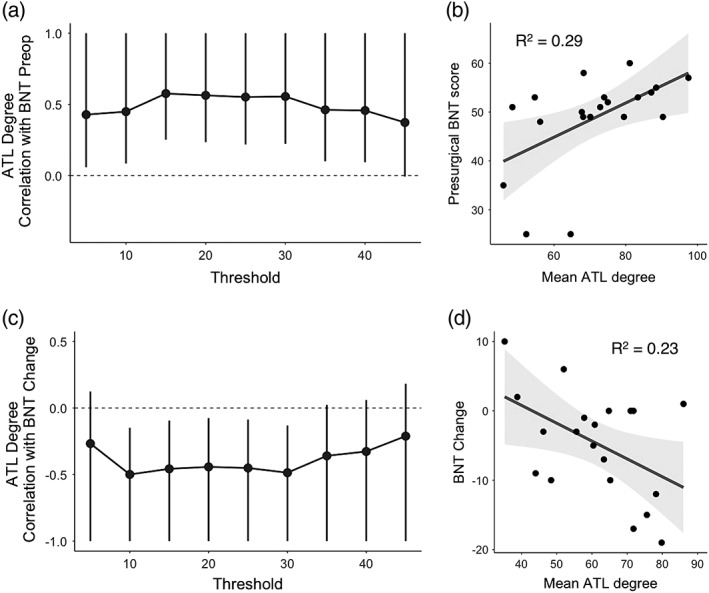Figure 5.

Top panels: Association between degree and preoperative naming ability. (a) Correlation between degree within left ATL regions and preoperative BNT scores across a range of thresholds. ATL degree represents summed connections of ROIs within the to‐be‐resected region to the rest of the language network (and not to each other). Whiskers represent 95% confidence intervals, and those which do not cross 0 denote a significant relationship at p < .05 uncorrected levels. (b) A representative scatterplot showing the average relationship between ATL degree across thresholds and preoperative BNT scores. Here, ATL degree was averaged across thresholds where this measure was significantly related to preoperative BNT scores (5–40 percentile as shown in a) to get a single R 2 value representing the strength of this relationship (p < .01). Bottom panels: Association between degree and postoperative naming change. (c) Correlation between degree within ATL regions and postoperative BNT change across a range of thresholds. As in (a), ATL degree at each threshold represents summed connections of ROIs within the to‐be‐resected region to the rest of the language network. Whiskers represent 95% confidence intervals, and those which do not cross 0 denote a significant relationship at p < .05 uncorrected levels. (d) A representative scatterplot showing the average relationship between ATL degree across thresholds and postoperative BNT change. ATL degree was averaged across thresholds where this measure was significantly related to preoperative BNT scores (10–30 percentile as shown in c) to get a single R 2 value representing the strength of this relationship (p < .05)
